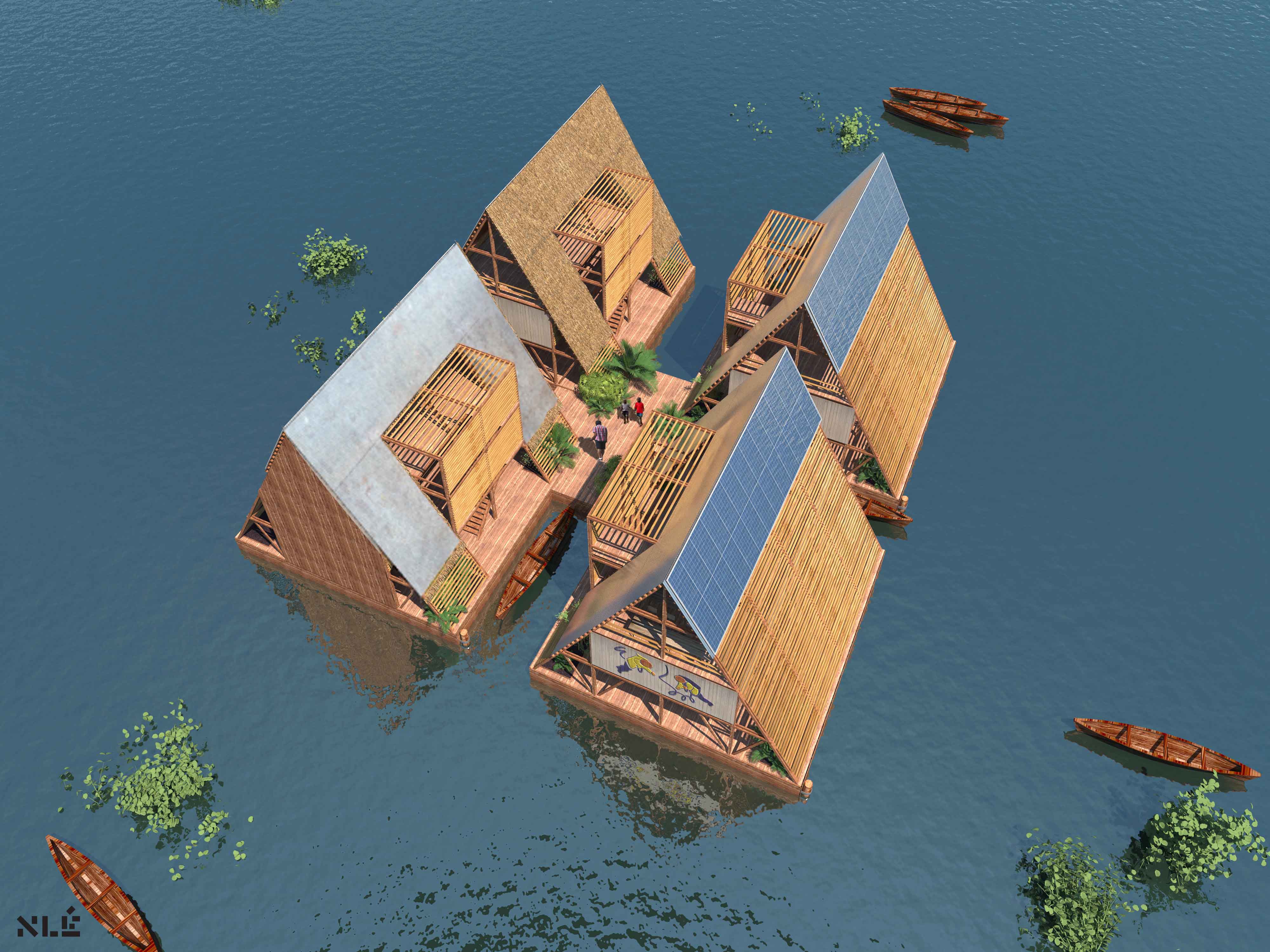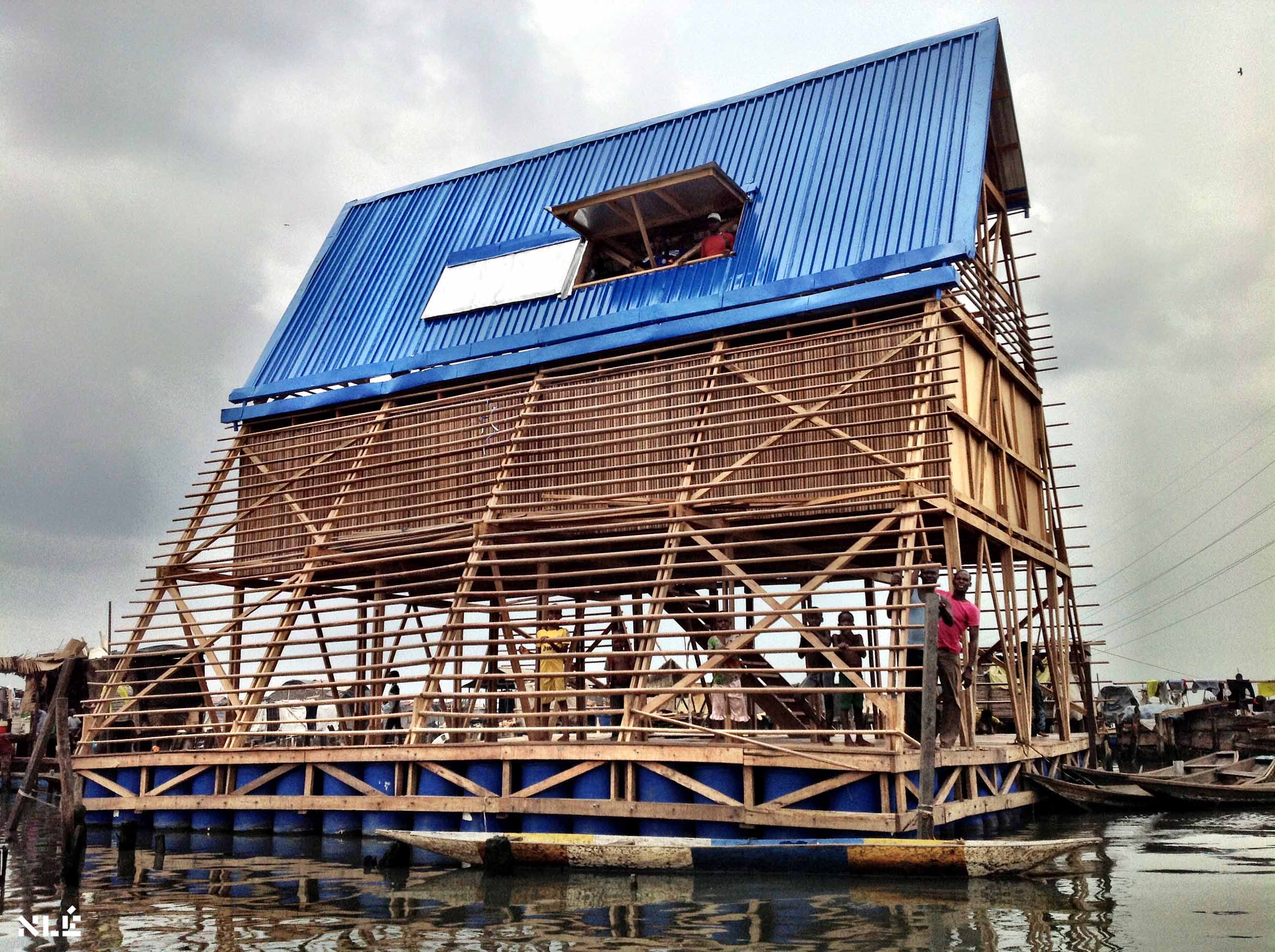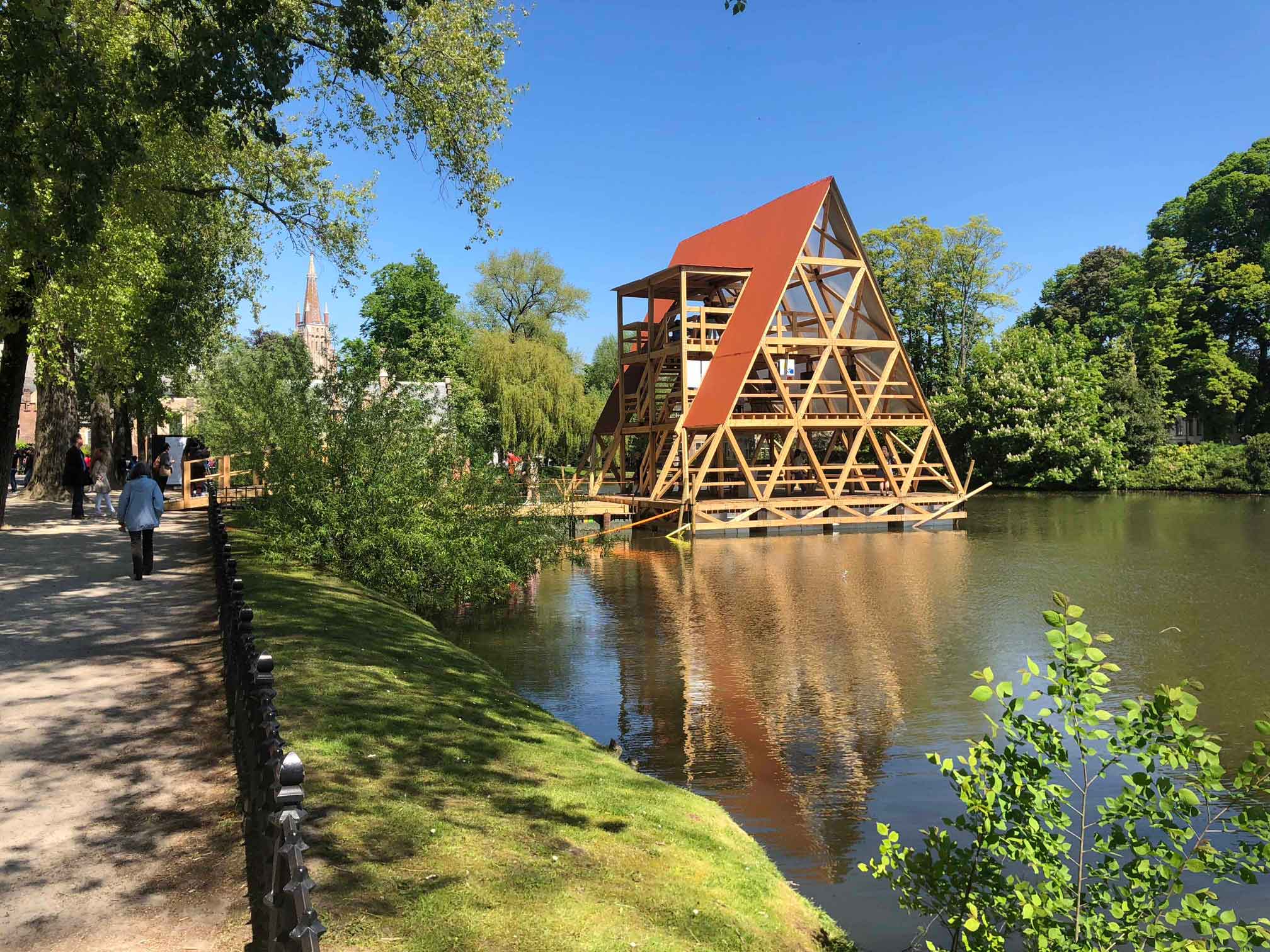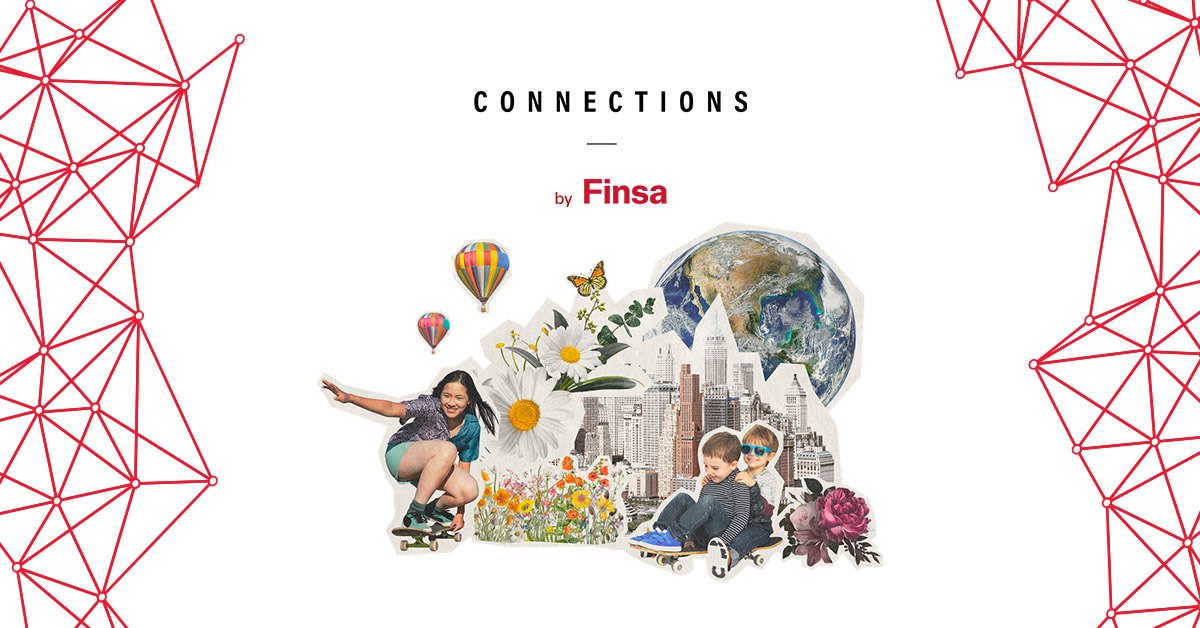What if Africa held the key to overcoming current challenges such as new forms of urbanism? What if it could teach the Western world how to incorporate diversity, equity, and inclusion into built environments? What if its dynamism and creative energy provides had the right space in which it could grow? Lesley Lokko, founder and director of the African Futures Institute, a postgraduate architecture centre based in Ghana’s capital, Accra, believes that Africa, as an almost uncharted territory, seems to be the solution to the problems we face, that it is capable of innovating and working towards developing more sustainable, liveable, resilient, and community-centred cities that improve people’s lives.
Ver esta publicación en Instagram
A rapidly growing population: challenge and opportunity
According to data from the Organisation for Economic Co-operation and Development (OECD) and the UN, the continent’s population is set to double, reaching 2 billion by 2050, rapidly surpassing that of China. Almost half of those people – some 950 million – will live in cities. In fact, Africa has the highest rate of urban growth – at almost 4 per cent it is twice the world average – yet more than 60 per cent of the sub-Saharan population lives in slums, poor shanty towns with no basic services and little or no disaster preparedness. How to clear these sprawling urban jungles is a demographic and planning challenge, but at the same time it is also a great opportunity.
Afrocentric, not Eurocentric, urbanism
The urban transition that Africa is experiencing has given rise to a scenario with lots of potential for creating new models of social, economic, and environmental development with an Afrocentric, and non-Eurocentric, vision of cities. It’s all about a different, more participatory, type of urbanism that is both committed to the people and inclusive. This social and cultural movement is being led by a new generation of architecture and urban planning professionals from all over the continent who have come up with alternatives after having spent quite a bit of time rethinking their cities and their approach to training in this field.
For example, African Design Centre, which was created by Rwandan architect Christian Benimana, was established with the aim of training this new batch of professionals who approach urban planning from a place of commitment to the community. The centre also hopes to alleviate the shortage of local professionals in the field. Another leader in this field is the Togolese architect Sénamé Koffi Agbodjinou, who is an advocate for combining tradition and new technologies and for turning a city into something that is more connected to the land, with people at heart of it all.
Ver esta publicación en Instagram
Facing climate change: floating cities
The pillars of the new African urbanism are based on different concepts. The first is sustainability and adapting to climate change. The leading project in this field is perhaps the Water Cities Project, which has identified the 20 main African cities with water potential (including Cairo, Dar es Salaam, Cape Town, Luanda and Abidjan) and which has been under development for many years, led by Nigerian architect and urban planner Kunlé Adeyemi of NLÉ.

In 2013, Adeyemi created the Makoko floating school, a simple and ingenious landmark design built on the Makoko lagoon in Lagos, Nigeria’s most populous city, but the school collapsed after a severe storm in 2016. At the time, described his simple method of building on water as “a test, a prototype”, an example of rebellious, guerrilla-type architecture.

Despite this initial failure, the Makoko floating system has evolved and grown, with four other structures having been built on water in different locations around the world since the original. One was established in Venice in 2016 for the 15th Biennale, and another has been in use in Bruges, Belgium as a school and cultural centre since 2018.

For the prototype in Minjiang, Chin, which was also built in 2018, bamboo and local wood varieties were used to build an open-air concert hall, an exhibition space, and a small information centre, all are grouped around a communal square. Back in Africa, in Cape Verde, the most recent of these building-on-water projects was completed in 2021, consisting of a cultural and creative platform in Mindelo Bay that features a live performance hall, a state-of-the-art recording studio, and a restaurant, all spread across three floating boats:
Ver esta publicación en Instagram
“Living on water is already a way of life and the question is how do you improve the conditions, how do you face the challenge of doing it in a safe, healthy, and environmentally sound way, especially when it comes to preventing rising water levels and the rainfall we are seeing because of climate change,” explained Adeyemi. He believes humanity is moving towards a more aquatic future.
The pedestrian city
Another key element of this new African urban planning is to create more walkable cities that are centred around their inhabitants. The Alárò City project, also in Lagos, is perhaps one of the best examples of this. The city, which will occupy 2,000 hectares, will be structured around five greenways that are 800 metres apart and well served by public transport, with the idea of leading people to open spaces in just 5 minutes, no matter where they are in the city. This means prioritising streets that encourage people to walk rather than drive.
Another basic principle of the Alárò City design is to foster a sense of community and highlight the shared elements. This concept is also a feature of the plans for the central business district of Appolonia in Ghana, which will accommodate 88,000 people, as well as a new eco-community in the Nigerian capital of Abuja, which will have several neighbourhoods all with local services just a 5-minute walk away:
Ver esta publicación en Instagram
Ver esta publicación en Instagram
Focusing on traditional construction
But the urban transformation of Africa does not stop there. In order to move towards innovative and sustainable development, the continent is also committed to restoring the roots of traditional construction. Urban planning is key to creating inclusive, green, and safe cities. However, there are calls for a move away from the master planning approach, often seen as a legacy of the colonial era that still has a very visible imprint in African cities, and towards more targeted and participatory strategies that respond more directly to local needs and realities. The concept of local is being used to reassert their identity, a philosophy that was previously seen post-independence African modernism.
Ver esta publicación en Instagram
This is exactly what’s happened in Senegal, a country that has shed Western influence and forged a new architectural style that draws on tradition when it comes to colours, shapes, and materials, without abandoning modernity. The local twist is evident in the capital Dakar, where you will find the bold geometry of the Cheikh Anta Diop University library:
Ver esta publicación en Instagram
Designing megacities
A mega-project is underway to transform Rwanda’s capital Kigali into a centre of urban excellence. The plan, by Singapore-based consultancy firm Surbana Jurong, is called Kigali Yacu!, which translates to Our Kigali!, and aims to house close to 4 million residents and create just under 2 million jobs by 2050. Its vision fits the philosophy of new African urbanism perfectly in that it applies the most equitable, participatory, strategically flexible, and scalable approach to city development, with affordable housing in suburban areas and high-rise towers, pedestrian walkways, green spaces, and an efficient public transport system. However, the plan does have its detractors, who consider it too costly and unrealistic, designed more for tourists and the wealthy than for ordinary people:
Even more megalomaniacal is the city that the American rapper, music producer, and philanthropist Akon has planned for Senegal, the country where his parents were born and where he lived as a child. He has named it after himself, Akon City, and is going to invest $6 billion to build it on 500 hectares south of Dakar on land donated by the president of the African country. Its aesthetics are so futuristic that it is already being called Wakanda, the country in which Marvel’s Black Panther is set:
Ver esta publicación en Instagram
Africapolis: taking action using reliable data
Human habitat professionals in Africa are calling for more political involvement in the planning and management of new cities in order to design appropriate strategies. But the continent’s kaleidoscope of social, political, and economic contexts – the definition of urban, for example, is not the same in South Africa or Kenya as it is in Ethiopia or Algeria – and statistical gaps that arise because many administrations lack sufficient capacity to record reliable data, can hinder progress. In an effort to fill these gaps, the Africapolis platform has emerged. It’s the only comprehensive and standardised geospatial database on cities and urbanisation dynamics in Africa that provides policy makers, practitioners, and researchers with visualisations and information on more than 7,700 urban clusters across 55 countries.
Ver esta publicación en Instagram




